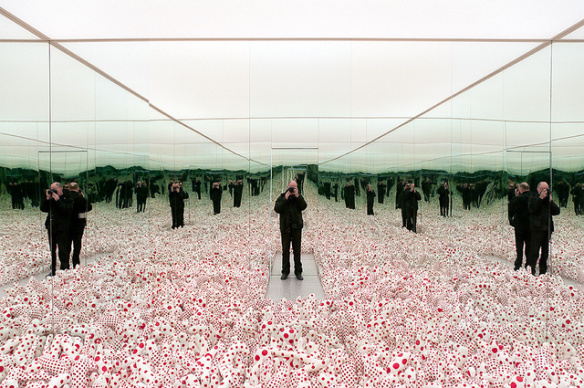

Color is a very wonderful thing, and so is our ability to see color. The human eye can actually differentiate over ten million individual colors. That, my dear readers, is a lot of paint swatches from Home Depot. When ever you look at any color, you probably see a lot of different colors in it, all mixed in making the unique shade that you see before you. But I have a question for all of you: What color is a mirror?
If you go to places like Amazon.com and look for mirrors, you will see they’re all kind of silvery in color. That isn’t actually too inaccurate, because mirrors are made out of silver or similar materials, like aluminum. But actually, a mirror is whatever color is in front of it. if you point a mirror at a blue wall, it’s blue. If you point it at a tree, it’s “tree” colored, etc., The color of a mirror has to do with how color works.
How Colors Work:
As we look at the things around us, they can be any one of the ten million colors that we can see. To keep it simple, we’ll just use one simple color: Blue. Now then, we must ask, why is it that blue is blue? Ultimately, the color of an object depends on what color of light is not absorbed. When visible light hits an object (like a blue bucket), all colors in the visible spectrum are absorbed except for blue. The blue color is diffused and scatters in all directions, so no matter what angle I look at this bucket, it’s always blue.
But what about things that are white? Well, just like the bucket, when normal white light hits something white (like an envelope), all the colors of the visible spectrum are reflected and none are absorbed, making me perceive this envelope as white. But a perfect mirror should reflect all colors as well. No matter what you put in front of a mirror—no matter the color—every color will be reflected back. So you could say that a mirror is white.
The only problem is that a mirror reflecting light doesn’t work the same way as objects diffusing and scattering light. A mirror reflects light in a single direction only, whereas pigment reflects light in every direction. This is why you can look at a mirror from the side and see things across the room at the same angle. This is called “specular reflection.” However, as light hits my blue bucket, the non-absorbed blue light is reflected and scattered in every direction. That type of reflection is called “diffuse reflection.”
The Perfect Mirror:

It must be noted that, up until now, when discussing how mirrors function, I have been discussing how a perfect mirror functions, but in this world there is no such thing as a perfect mirror. All mirrors we make have slight imperfections in them. These imperfections cause the mirrors to absorb just a little bit of light. It’s nowhere near enough for you to notice a change in the reflection, but it is there.
If you look at a spectrum of light coming off of a mirror reflecting white light, you will see that mirrors reflect light within the 510 nanometer range the best, which we perceive as green light. This means that every typical mirror that you come across reflects green light more than any other color in the visible spectrum, technically making every typical mirror just the faintest bit green.
You can actually prove this through a simple experiment at home, and I’m sure you’ve all done this before without knowing. If you take two mirrors and point them at one another, you will get the phenomenon known as a “mirror tunnel,” where the same image is reflected back and forth, and back and forth forever. When you look into the mirror tunnel, you’ll notice that ,with each reflection, a little bit of the visual light is lost (with green light losing the least amount). That’s why, way down at the end of the tunnel, the image is dimmer and greener.
WATCH: What is the Color of a Mirror?